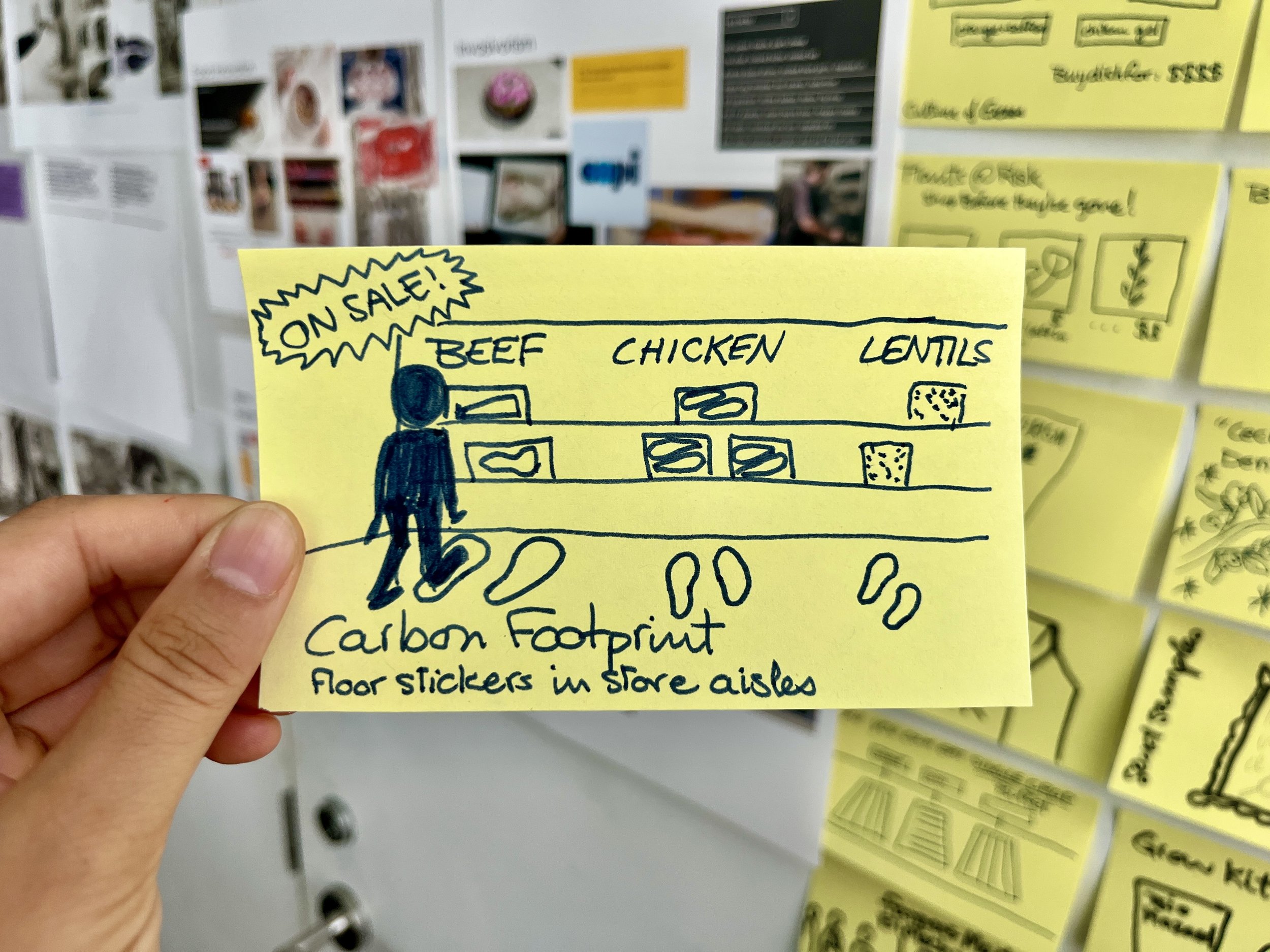Thesis Provotypes: Provoking Discussion Through Conceptual Artifacts
A wall full of provotypes in our second-year class, Thesis Studio.
Our second-year students have leapt, head-first, into the grand adventure known as thesis.
Topics have been considered, rejected, and chosen; books tugged off library shelves; podcasts played on 1.5x speed; and a new platoon of targeted ads triggered.
A speculative artifact to provoke reflection on the impacts of what we choose to eat.
But when it comes to a graduate design thesis, where does one even begin?
And what exactly is a provotype?
As defined by UX Collective, a provotype is a design artifact — digital or physical — whose main goal is to provoke discussion among different types of users and stakeholders. And if you know anything about Products of Design, you know we love to provoke discussion.
In Thesis Studio, taught by Alexia Cohen, Creative Lead at Dalberg Design and a 2018 program graduate, ideas are prompted, provoked, questioned, and explored. In Week 2, students covered the walls with mood boards and sticky notes peppered with potential provotypes: a desktop patch of grass so you can always “touch nature”; a 3D-printed-and-decorated cookie; and a self-care gift set for tough guys who definitely don’t need anything from anyone.
More provotype ideas!
Each student generated 50 ideas inspired by their initial thesis direction—be that labor organizing, long-distance friendships, or lighting design. The driving purpose behind these provotypes isn’t to identify potential product solutions, but instead to spark questions that shed light on further context, conflicts, and opportunities. (Prototypes, on the other hand, are used to test concepts and gather feedback.)
Students spent time weighing in on each other’s provotypes with additional ideas, critiques, and reactions. After this, each student will build a low-fi physical provotype, while expanding their skills in on-site observation and research.
Check back in on our blog and newsletter to watch these thesis projects continue to evolve!








